The death of the dual, or how to count sheep in Slovenian

One reason why translation is so difficult – and why computer translations are sometimes unreliable – is that languages are more than just different lists of names for the same universal inventory of concepts. There is rarely a perfect one-to-one equivalence between expressions in different languages: the French word mouton corresponds sometimes to English sheep, and at other times to the animal’s meat, where English uses a separate word lamb or mutton.
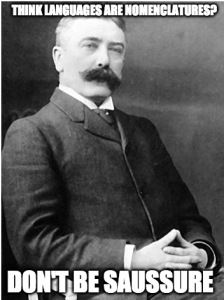 This was one of the great insights of Ferdinand de Saussure, arguably the father of modern linguistics. It applies not only in the domain of lexical semantics (word meaning), but also to the categories which languages organise their grammars around. In English, we systematically use a different form of nouns and verbs depending on whether we are referring to a single entity or multiple entities. The way we express this distinction varies: sometimes we make the plural by adding a suffix to the singular (as with hands, oxen), sometimes we change the vowel (foot/feet) and occasionally we don’t mark the distinction on a noun at all, as with sheep (despite the best efforts of this change.org petition to change the singular to ‘shoop’). Still, we can often tell whether someone is talking about one or more sheep by the form of the agreeing verb: compare ‘the sheep are chasing a ball’ to ‘the sheep is chasing a ball’.
This was one of the great insights of Ferdinand de Saussure, arguably the father of modern linguistics. It applies not only in the domain of lexical semantics (word meaning), but also to the categories which languages organise their grammars around. In English, we systematically use a different form of nouns and verbs depending on whether we are referring to a single entity or multiple entities. The way we express this distinction varies: sometimes we make the plural by adding a suffix to the singular (as with hands, oxen), sometimes we change the vowel (foot/feet) and occasionally we don’t mark the distinction on a noun at all, as with sheep (despite the best efforts of this change.org petition to change the singular to ‘shoop’). Still, we can often tell whether someone is talking about one or more sheep by the form of the agreeing verb: compare ‘the sheep are chasing a ball’ to ‘the sheep is chasing a ball’.
Some languages make more fine-grained number distinctions. The English word sheep could be translated as ovca, ovci or ovce in Slovenian, depending on whether you’re talking about one, two, or three or more animals, respectively. Linguists call this extra category between singular and plural the dual. The difference between dual and plural doesn’t show up just in nouns, but also in adjectives and verbs which agree with nouns. So to translate the sentence ‘the beautiful sheep are chasing a ball’, you need to ascertain whether there are two or more sheep, not just to translate sheep, but also beautiful and chase.
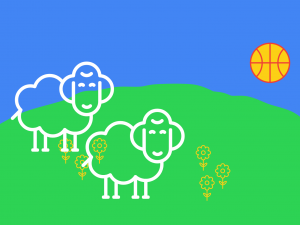
beautiful sheep chase ball
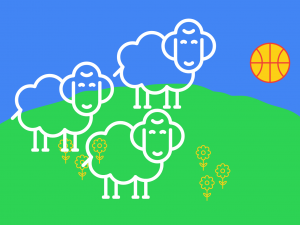
beautiful sheep chase ball
According to some, having a dual number makes Slovenian especially suited for lovers (could this explain the Slovenian tourist board’s decision to title their latest campaign I feel sLOVEnia?). But putting such speculations aside, it’s hard to see what the point of a dual could be. We rarely need to specify whether we are talking about two or more than two entities, and on the rare occasions we do need to make this information explicit, we can easily do so by using the numeral two.
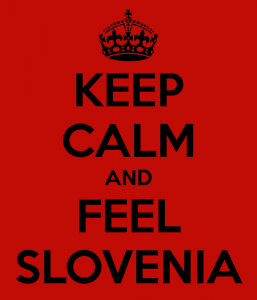
This might be part of the reason why many languages, including English, have lost the dual number. Both English and Slovenian ultimately inherited their dual from Proto-Indo-European, the ancestor of many of the languages of Europe and India. Proto-Indo-European made a distinction between dual and plural number in its nouns, adjectives, pronouns, and verbs, but most of the modern languages descended from it have abandoned this three-way system in favour of a simpler opposition between singular and plural. Today, the dual survives only in two Indo-European languages, Slovenian and Sorbian, both from the Slavic subfamily.
In English the loss of the dual was a slow process, taking place over thousands of years. By the time the predecessor of English had split off from the other Germanic languages, the plural had replaced the dual everywhere except the first and second-person pronouns we and you, and verbs which agreed with them. By the earliest written English texts, it had lost the dual forms of verbs altogether, but still retained distinct pronouns for ‘we two’ and ‘you two’. By the 15th century, these were replaced by the plural forms, bringing the dual’s final demise.
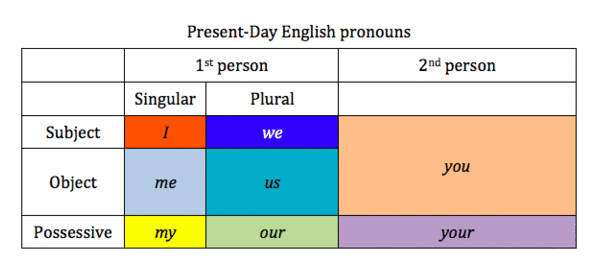
Grammatical categories do not always disappear without a trace – in some languages the dual has left clues of its earlier existence, even though no functional distinction between dual and plural remains. Like English, German lost its dual, but in some Southern German dialects the dual pronoun enk (cognate with Old English inc, ‘to you two’) has survived instead of the old plural form. In modern dialects of Arabic, plural forms of nouns have generally replaced duals, except in a few words mostly referring to things that usually exist in pairs, like idēn ‘hands’, where the old dual form has survived as the new plural instead. Other languages show vestiges of the dual only in certain syntactic environments. For example, Scottish Gaelic has preserved old dual forms of certain nouns only after the numeral ‘two’: compare aon chas ‘one foot’, dà chois ‘two feet’, trì casan ‘three feet’, casan ‘feet’.
Although duals seem to be on the way out in Indo-European languages, it isn’t hard to find healthy examples in other language families (despite what the Slovenian tourist board might say). Some languages have even more complicated number systems: Larike, one of the languages spoken in Indonesia, has a trial in addition to a dual, which is used for talking about exactly three items. And Lihir, one of the many languages of Papua New Guinea, has a paucal number in addition to both dual and trial, which refers to more than three but not many items. This system of five number categories (singular/dual/trial/paucal/plural) is one of the largest so far discovered. Meanwhile, on the other end of the spectrum are languages which don’t make any number distinction in nouns, like English sheep.
